- Home
- Randall Garrett
Anchorite
Anchorite Read online
ANCHORITE
by
JOHNATHAN BLAKE MACKENZIE
Illustrated by Schelling
There are two basic kinds of fools--the ones who know they are fools, and the kind that, because they do not know that, are utterly deadly menaces!
The mountain was spinning.
Not dizzily, not even rapidly, but very perceptibly, the great mass ofjagged rock was turning on its axis.
Captain St. Simon scowled at it. "By damn, Jules," he said, "if you cansee 'em spinning, it's too damn fast!" He expected no answer, and gotnone.
He tapped the drive pedal gently with his right foot, his gaze shiftingalternately from the instrument board to the looming hulk of stonebefore him. As the little spacecraft moved in closer, he tapped thereverse pedal with his left foot. He was now ten meters from the surfaceof the asteroid. It was moving, all right. "Well, Jules," he said in hismost commanding voice, "we'll see just how fast she's moving. Prepare tofire Torpedo Number One!"
"Yassuh, boss! Yassuh, Cap'n Sain' Simon, suh! All ready on the firin'line!"
He touched a button with his right thumb. The ship quivered almostimperceptibly as a jet of liquid leaped from the gun mounted in the noseof the ship. At the same time, he hit the reverse pedal and backed theship away from the asteroid's surface. No point getting any more gunk onthe hull than necessary.
The jet of liquid struck the surface of the rotating mountain andsplashed, leaving a big splotch of silvery glitter. Even in the vacuumof space, the silicone-based solvents of the paint vehicle took time toboil off.
"How's that for pinpoint accuracy, Jules?"
"Veddy good, M'lud. Top hole, if I may say so, m'lud."
"You may." He jockeyed the little spacecraft around until he wasreasonably stationary with respect to the great hunk of whirling rockand had the silver-white blotch centered on the crosshairs of the peeperin front of him. Then he punched the button that started the timer andwaited for the silver spot to come round again.
The asteroid was roughly spherical--which was unusual, but notremarkable. The radar gave him the distance from the surface of theasteroid, and he measured the diameter and punched it through thecalculator. "Observe," he said in a dry, didactic voice. "The diameteris on the order of five times ten to the fourteenth micromicrons." Hekept punching at the calculator. "If we assume a mean density of twopoint six six times ten to the minus thirty-sixth metric tons per cubicmicromicron, we attain a mean mass of some one point seven four timesten to the eleventh kilograms." More punching, while he kept his eye onthe meteorite, waiting for the spot to show up again. "And that, my dearJules, gives us a surface gravity of approximately two times ten to theminus sixth standard gees."
"_Jawohl, Herr Oberstleutnant._"
"Und zo, mine dear Chules, ve haff at least der grave zuspicion dot derzurface gravity iss less dan der zentrifugal force at der eqvator!_Nein? Ja!_ Zo."
"_Jawohl, Herr Konzertmeister._"
Then there was a long, silent wait, while the asteroid went itsleisurely way around its own axis.
"There it comes," said Captain St. Simon. He kept his eyes on thecrosshair of the peeper, one hand over the timer button. When the silversplotch drifted by the crosshair, he punched the stop button and lookedat the indicator.
"Sixteen minutes, forty seconds. How handy." He punched at thecalculator again. "Ah! You see, Jules! Just as we suspected! Negativegees at the surface, on the equator, comes to ten to the minus thirdstandard gees--almost exactly one centimeter per second squared. So?"
"Ah, so, honorabu copton! Is somesing rike five hundred times as greatas gravitationar attraction, is not so?"
"Sukiyaki, my dear chap, sometimes your brilliance amazes me."
Well, at least it meant that there would be no loose rubble on thesurface. It would have been tossed off long ago by the centrifugalforce, flying off on a tangent to become more of the tiny rubble of thebelt. Perhaps "flying" wasn't exactly the right word, though, whenapplied to a velocity of less than one centimeter per second. _Drifting_off, then.
"What do you think, Jules?" said St. Simon.
"Waal, Ah reckon we can do it, cap'n. Ef'n we go to the one o' them tharpoles ... well, let's see--" He leaned over and punched more figuresinto the calculator. "Ain't that purty! 'Cordin' ter this, thar's a spotat each pole, 'bout a meter in diameter, whar the gee-pull is _greater_than the centry-foogle force!"
Captain St. Simon looked at the figures on the calculator. The forces,in any case, were negligibly small. On Earth, where the surface gravitywas ninety-eight per cent of a Standard Gee, St. Simon weighed close totwo hundred pounds. Discounting the spin, he would weigh about fourten-thousandths of a pound on the asteroid he was inspecting. The spinat the equator would try to push him off with a force of about twotenths of a pound.
But a man who didn't take those forces into account could get himselfkilled in the Belt.
"Very well, Jules," he said, "we'll inspect the poles."
"Do you think they vill velcome us in Kraukau, _Herr Erzbischof_?"
* * * * *
The area around the North Pole--defined as that pole from which the bodyappears to be spinning counterclockwise--looked more suitable foroperations than the South Pole. Theoretically, St. Simon could havestopped the spin, but that would have required an energy expenditure ofsome twenty-three thousand kilowatt-hours in the first place, and itwould have required an anchor to be set somewhere on the equator. Sincehis purpose in landing on the asteroid was to set just such an anchor,stopping the spin would be a waste of time and energy.
Captain St. Simon positioned his little spacecraft a couple of metersabove the North Pole. It would take better than six minutes to fall thatfar, so he had plenty of time. "Perhaps a boarding party, Mr. Christian!On the double!"
"Aye, sir! On the double it is, sir!"
St. Simon pushed himself over to the locker, took out his vacuum suit,and climbed into it. After checking it thoroughly, he said: "Prepare toevacuate main control room, Mr. Christian!"
"Aye, aye, Sir! All prepared and ready. I hope."
Captain St. Simon looked around to make sure he hadn't left a bottle ofcoffee sitting somewhere. He'd done that once, and the stuff had boiledout all over everywhere when he pulled the air out of the little room.Nope, no coffee. No obstacles to turning on the pump. He thumbed thebutton, and the pumps started to whine. The whine built up to acrescendo, then began to die away until finally it could only be feltthrough the walls or floor. The air was gone.
Then he checked the manometer to make sure that most of the air hadactually been pumped back into the reserve tanks. Satisfied, he touchedthe button that would open the door. There was a faint jar as theremaining wisps of air shot out into the vacuum of space.
St. Simon sat back down at the controls and carefully repositioned theship. It was now less than a meter from the surface. He pushed himselfover to the open door and looked out.
He clipped one end of his safety cable to the steel eye-bolt at the edgeof the door. "Fasten on carefully, Jules," he said. "We don't want tolose anything."
"Like what, _mon capitain_?"
"Like this spaceship, _mon petit tete de mouton_."
"Ah, but no, my old and raw; we could not afford to lose the so-dear_Nancy Bell_, could we?"
The other end of the long cable was connected to the belt of the suit.Then St. Simon launched himself out the open door toward the surface ofthe planetoid. The ship began to drift--very slowly, but not so slowlyas it had been falling--off in the other direction.
He had picked the spot he was aiming for. There was a jagged hunk ofrock sticking out that looked as though it would make a good handhold.Right nearby, there was a fairly smooth spot that would do to brake his"fall". He st
ruck it with his palm and took up the slight shock with hiselbow while his other hand grasped the outcropping.
He had not pushed himself very hard. There is not much weathering on thesurface of an asteroid. Micro-meteorites soften the contours of the rocka little over the millions of millennia, but not much, since the debrisin the Belt all has roughly the same velocity. Collisions do occur, butthey aren't the violent smashes that make the brilliant meteor displaysof Earth. (And there is still a standing argument among the men of theBelt as to whether that sort of action can be called "weathering".) Mostof the collisions tend to cause fracturing of the surface, which resultsin jagged edges. A man in a vacuum suit does not push himself against asurface like that with

 Despoilers of the Golden Empire
Despoilers of the Golden Empire The Highest Treason
The Highest Treason Brain Twister
Brain Twister The Judas Valley
The Judas Valley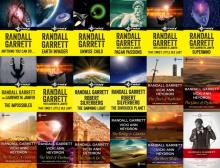 The Impossibles
The Impossibles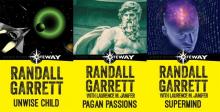 Pagan Passions
Pagan Passions Quest of the Golden Ape
Quest of the Golden Ape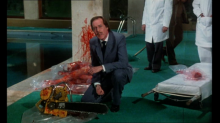 Psichopath
Psichopath By Proxy
By Proxy Damned If You Don't
Damned If You Don't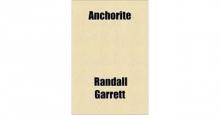 Anchorite
Anchorite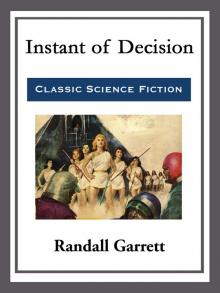 Instant of Decision
Instant of Decision The Bramble Bush
The Bramble Bush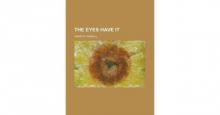 The Eyes Have It
The Eyes Have It Dead Giveaway
Dead Giveaway ...After a Few Words...
...After a Few Words... Black Eyes and the Daily Grind
Black Eyes and the Daily Grind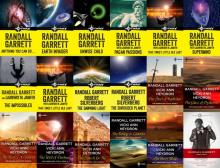 That Sweet Little Old Lady
That Sweet Little Old Lady With No Strings Attached
With No Strings Attached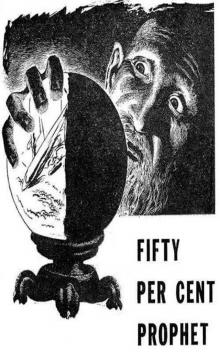 Fifty Per Cent Prophet
Fifty Per Cent Prophet The Asses of Balaam
The Asses of Balaam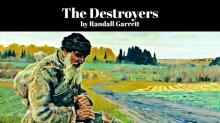 The Destroyers
The Destroyers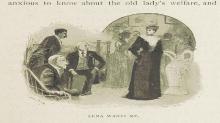 But, I Don't Think
But, I Don't Think Cum Grano Salis
Cum Grano Salis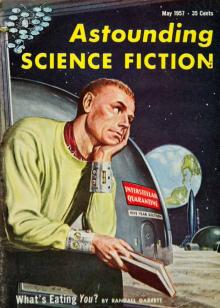 In Case of Fire
In Case of Fire Hanging by a Thread
Hanging by a Thread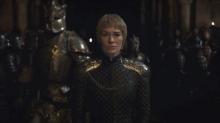 Heist Job on Thizar
Heist Job on Thizar A World by the Tale
A World by the Tale Nor Iron Bars a Cage....
Nor Iron Bars a Cage.... Suite Mentale
Suite Mentale The Man Who Hated Mars
The Man Who Hated Mars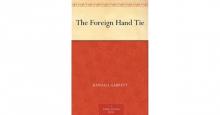 The Foreign Hand Tie
The Foreign Hand Tie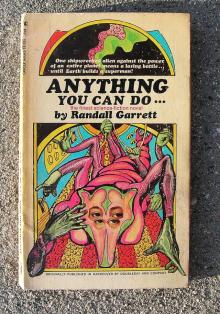 Anything You Can Do ...
Anything You Can Do ...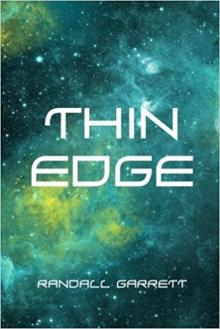 Thin Edge
Thin Edge ...Or Your Money Back
...Or Your Money Back Viewpoint
Viewpoint Hail to the Chief
Hail to the Chief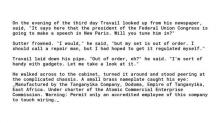 Made in Tanganyika
Made in Tanganyika Lord Darcy Investigates
Lord Darcy Investigates Too Many Magicians
Too Many Magicians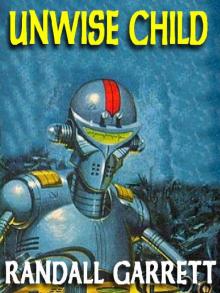 Unwise Child
Unwise Child A Spaceship Named McGuire
A Spaceship Named McGuire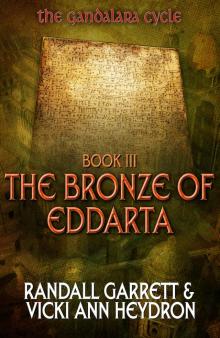 The Bronze of Eddarta
The Bronze of Eddarta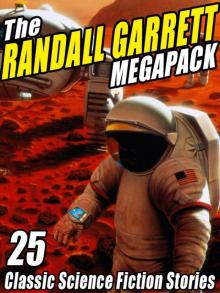 The Randall Garrett Megapack
The Randall Garrett Megapack Return to Eddarta
Return to Eddarta Too Many Magicians (lord darcy)
Too Many Magicians (lord darcy) The Well of Darkness
The Well of Darkness Takeoff!
Takeoff!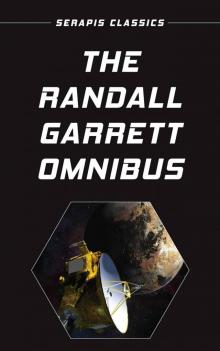 The Randall Garrett Omnibus
The Randall Garrett Omnibus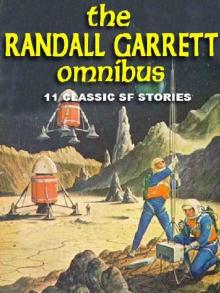 The Randall Garrett Omnibus: Eleven SF Classics
The Randall Garrett Omnibus: Eleven SF Classics The Second Randall Garrett Megapack
The Second Randall Garrett Megapack The River Wall
The River Wall The Glass of Dyskornis
The Glass of Dyskornis The Search for Kä
The Search for Kä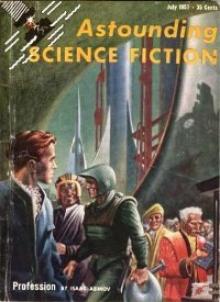 The Best Policy
The Best Policy